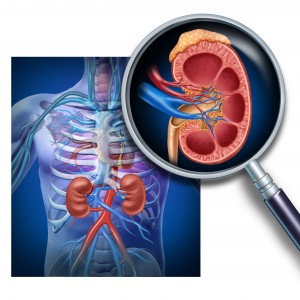UAB Researchers Develop a Decision Aid Program on Lupus Therapy Options

 Researchers at the University of Alabama at Birmingham (UAB) are currently enrolling participants to conduct a study, funded by the Patient-Centered Outcomes Research Institute, aimed at helping minority women suffering from lupus nephritis make an informed decision concerning available therapies.
Researchers at the University of Alabama at Birmingham (UAB) are currently enrolling participants to conduct a study, funded by the Patient-Centered Outcomes Research Institute, aimed at helping minority women suffering from lupus nephritis make an informed decision concerning available therapies.
Systemic lupus erythematosus (SLE) is an autoimmune disease in which the body’s own immune system overreacts and attacks healthy joints and organs. Lupus often affects young women, being more frequent among African-American and Hispanic minorities who experience the severe form of the disease and increased likelihood of succumbing to lupus compared to white women. When the immune system attacks the kidney in lupus patients, the organ suffers inflammation, a process also called lupus nephritis. Lupus nephritis is one of the most severe complications in SLE patients that when left untreated can lead to long-term damage and even kidney failure with consequent need for dialysis.
The UAB team has developed a decision aid computer program to assist physicians and their Hispanic and African-American lupus patients with kidney disease to select the optimal treatment approach for each individual case.
“Our long-term goal was to make sure that minority patients with lupus have the information they need to make informed decisions, at the right time, so they may actively participate in their health care,” explained Dr. Jasvinder Singh in a news release. “Use of decision aids should improve patient care and decrease racial/ethnic disparities for lupus patients in the United States.”
To create the decision aid program, researchers performed a review of all the published articles concerning treatments available for kidney disease in lupus patients, followed by a statistical analysis to determine the benefits and risks of several lupus medications. The decision aid program also took into account input provided by patients to ensure that the program content is helpful, relevant and applicable in the process of decision-making by lupus patients.
The decision aid is an internet-based computer program that can be loaded onto a tablet device offering both patients and physicians a decision aid tool. “The aid contains self-help strategies and online resources, as well as descriptions of different medications commonly used to treat lupus nephritis,” said Dr. Singh. “It provides more information to patients so they will have less decisional conflict. We believe it will help patients participate more fully with their physician, which should lead to better outcomes.”
Subjects such as the adverse side effects of different lupus medications and information regarding drug impact in women at different stages of their life, namely during pregnancy, nursing or post-menopausal, are included in the decision aid program. The program is available both in English and Spanish and it is estimated to take around 90 minutes for the patient to screen the entire tool. Three months after its use, the enrolled patients will have a short follow-up appointment with the research team.
“The decision aid is designed for patients, but we hope that physicians will recognize the value of this free tool and its potential impact on patients’ understanding and comprehension of their disease,” concluded Dr. Singh. “If the results of the current trial show that these sorts of decision tools are beneficial, it would be fairly simple to adapt them to other diseases, or different patient populations, where decision-making and information-gathering are important components.”
The UAB team is currently enrolling participants for this study. Women in Alabama aged 19 and older who are experiencing a flare-up of lupus nephritis are eligible for the study.





